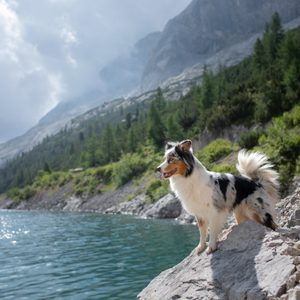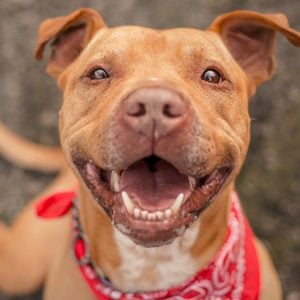The Story of the Very First War Dog Platoon
Updated: Nov. 25, 2022
It’s 1943, the Battle of Bougainville. The Americans attacking this South Pacific island are outnumbered and outgunned. Their best hope lies with specially trained soldiers named Jack, Andy, and Caesar. Two problems: The trio has never seen combat, and they’re canines.
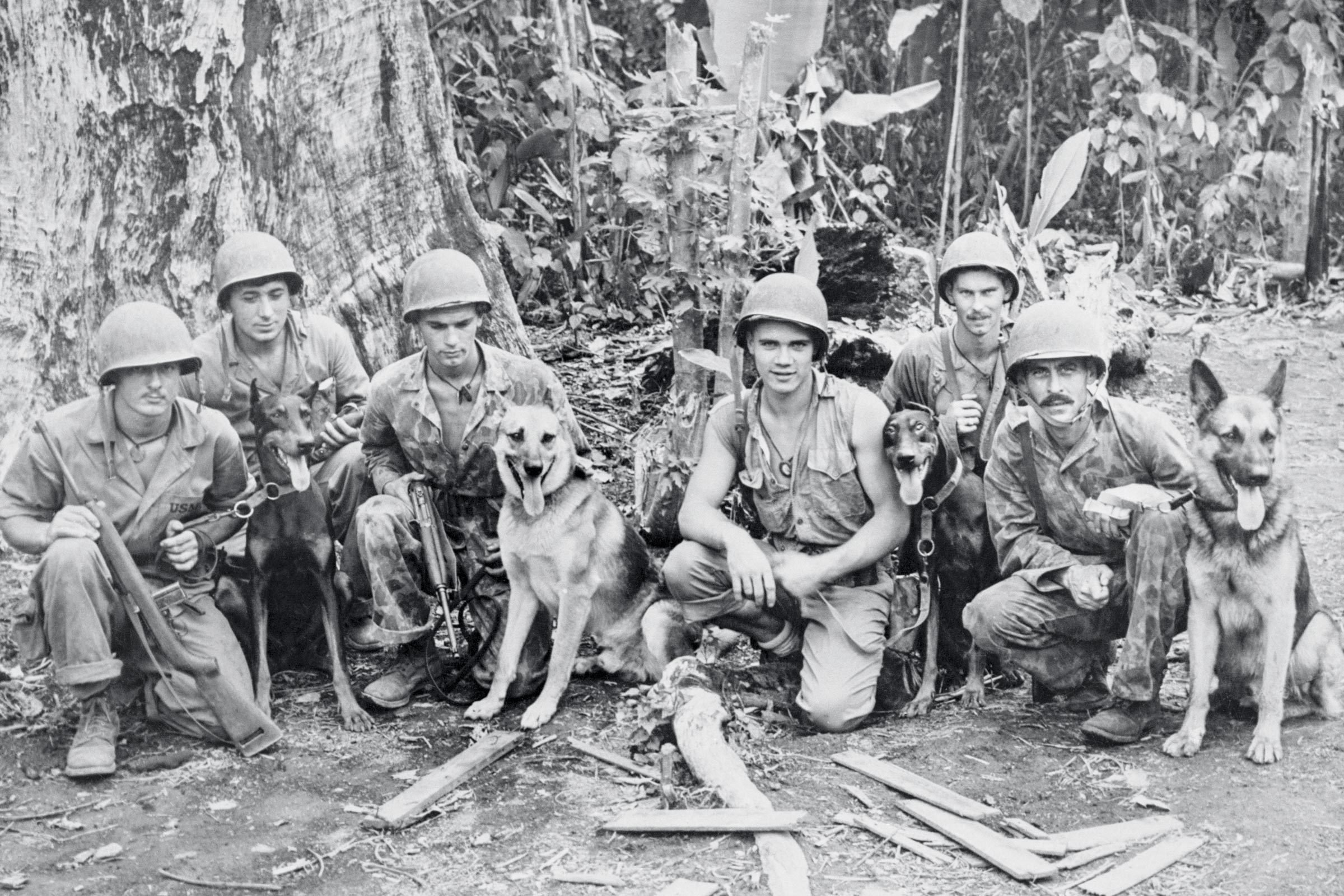
The soldiers filed off the beach and into the twilight world of the jungle. The enemy lay concealed ahead, they could be sure. They followed an unlikely leader: a black-and-tan Doberman named Andy who betrayed no sense of the danger of the situation. Some of the men bristled at the arrangement.
This was to save them all from enemy fire? The canine was a ruined show dog. To make matters worse, the platoon’s backup was a German shepherd who months before had been roaming the streets of the Bronx with the three boys who owned him.
As they moved up the trail, they heard gunfire and artillery in the distance as the rest of the Second Marine Raider Battalion fought to secure the shoreline. It was 1943; the assault on Bougainville, a speck of land in the South Pacific, had just begun. Allied forces needed to capture a safe zone large enough to build an airfield for an eventual attack on the nearby island of New Britain, the final Japanese stronghold in the region. From there, the Allies would hop from island to island until they were within bombing range of Japan itself.
The campaign in the Pacific depended on Bougainville. For the Marines marching blindly into the dense, enemy-occupied jungle, the future depended on dogs who were never supposed to have been part of the war in the first place.
Alene Erlanger was a 46-year-old New Jersey socialite with a love for show poodles when Pearl Harbor was bombed. Days after the attack, she invited her friend Roland Kilbon, a journalist who covered the dog world, to lunch. “Other countries have used dogs in their armies for years and ours have not,” she told him. “Just think what dogs can do guarding forts, munitions plants, and such.” She envisioned dog fanciers around the country as drill sergeants, grooming a new kind of warrior for a new war.
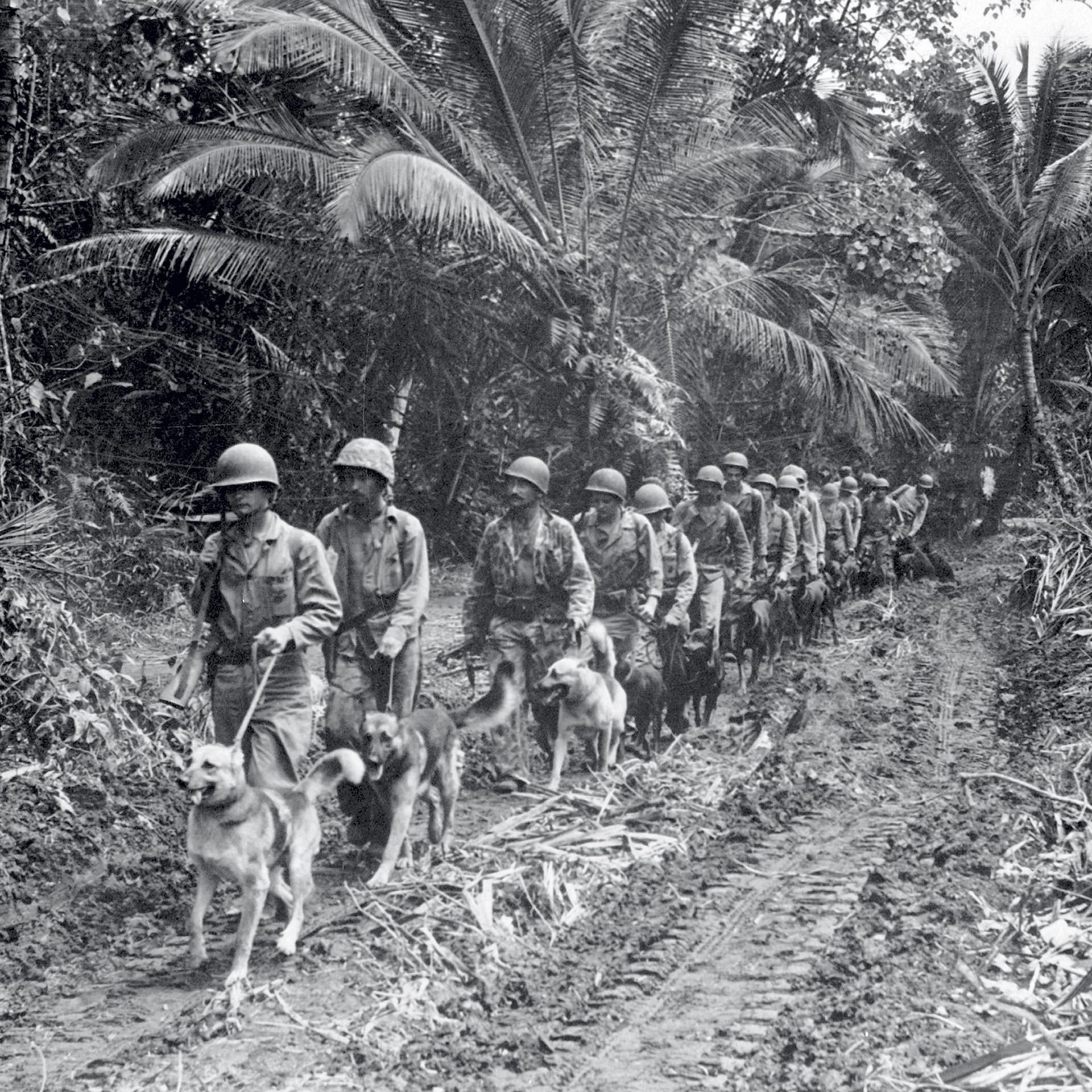
Kilbon agreed, and the two created Dogs for Defense, an organization that would train dogs for the military. One problem: The military wanted nothing to do with animals. Over the years, jeeps had replaced horses, trucks had taken the place of pack mules, and radios had made carrier pigeons obsolete.
Then, in June 1942, in the dead of night, four German saboteurs laden with explosives landed on Long Island, New York. Four more surfaced on a Florida beach. The FBI tracked down all eight, but the incidents showed how vulnerable munitions factories and other high-value operations were. Facing a shortage of men due to the war, Uncle Sam reluctantly realized the country needed dogs to patrol 3,700 miles of coastline. Erlanger went to work.
Soon, people from around the country—including actress Greer Garson and crooner Rudy Vallee—were enlisting their dogs for the war effort. Brothers Max, Morris, and Irving Glazer of New York City owned Caesar, a purebred German shepherd. Caesar was smart. The brothers could buy a parcel at the butcher shop and tell him to “take it to Mom.” The dog would carry the package through the city blocks and to the door of the Glazers’ fourth-floor walk-up without trying to eat the contents—even steak.
When the war broke out, the Glazer sons headed into the military, leaving Caesar in their mother’s care. With the boys away, the dog grew morose. He needed purpose. So, after consulting with her sons, Mrs. Glazer signed the shepherd up for the war effort. He soon shipped out to an Army camp for training.
On Long Island, Joseph Verhaeghe was making his own painful decision. As a teenager during World War I, he had watched his infant sister be killed when the Germans invaded Belgium. As a grown man, he moved to the United States, married, and had a son named Bobby. Then war broke out again. When he learned of Dogs for Defense, he decided to enlist Jack, the family’s Belgian sheepdog, a slinky relative of the German shepherd. Jack was a good boy with an ornery streak who gulped down the ice cream of neighborhood children when they weren’t looking. Verhaeghe hesitated to send the dog off until 11-year-old Bobby tearfully announced, “Pop, if Jack can save lives, I want him to go in.”
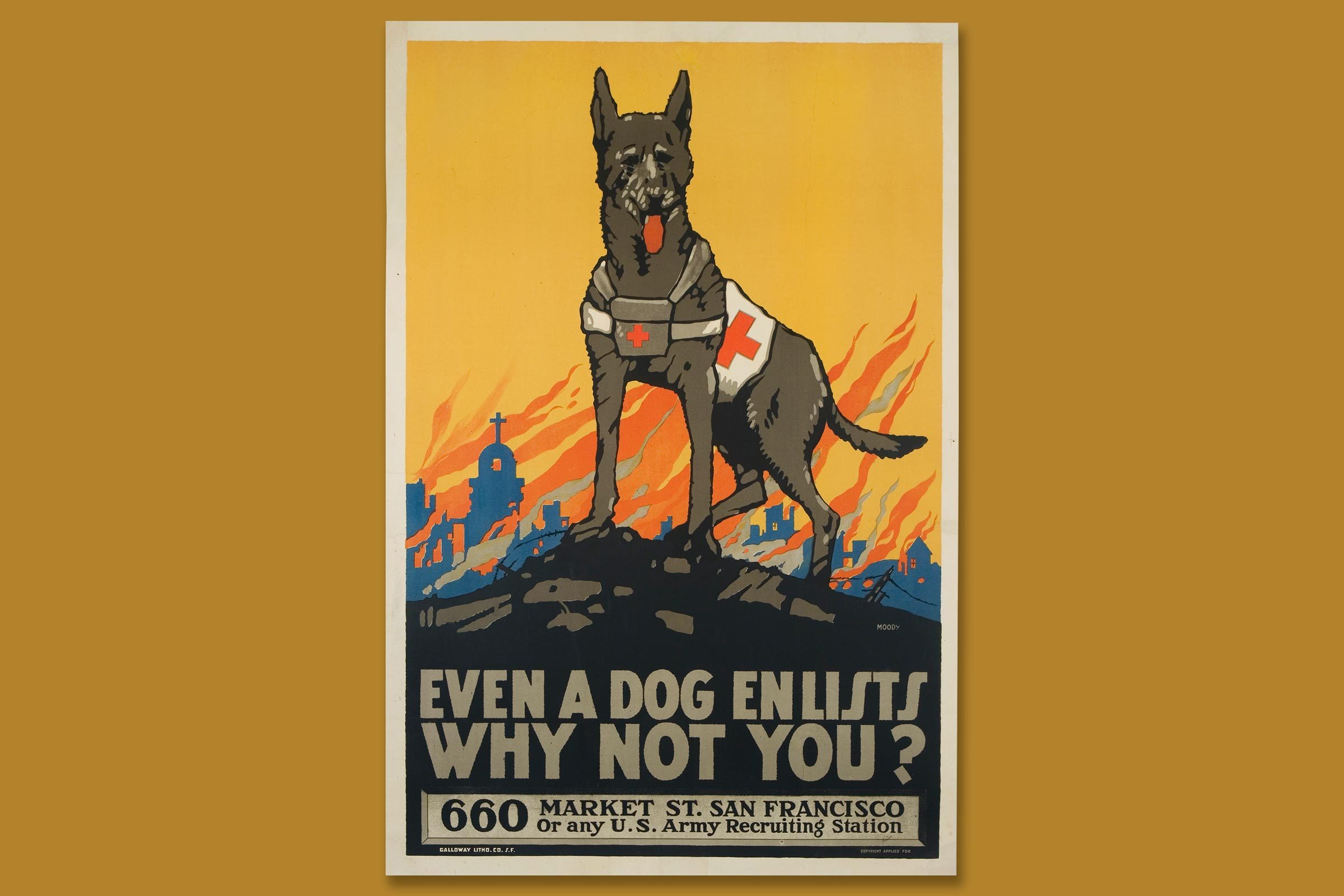
Meanwhile, a prim Doberman named Andreas von Wiede-Hurst—aka Andy—was about to join the war effort as well. Andy had impeccable bone structure, but his penchant for scrapping with other dogs led to a mangled ear, which kept him off the show-dog circuit. When the Marines began looking for dog recruits, Andy’s owners knew he was exactly what they were seeking—a strong, athletic, levelheaded animal with an eight-foot leap.
All dogs went through a two-week basic training, where they learned commonplace commands like sit, stay, and come, as well as how to ride in the back of trucks on bumpy roads. They were also exposed to the sound of gunfire until they didn’t flinch. The majority became sentry dogs and were taught to growl or alert at the approach of strangers.
Two more select classes of dogs trained for combat duty. Over 13 weeks, messenger dogs were drilled until they would run between two handlers, dodging all obstacles in their path to get their communication from one trainer to the other. They would be especially important in fighting in the South Pacific, as the best walkie-talkies of the day had a reception range of just a quarter of a mile and experienced interference in the dense jungle.
The animals with the keenest noses and most stable temperaments became scout dogs. They were trained not to bark when they sensed danger but rather to raise their hackles or lift their tails.
In June 1943, a Liberty ship left San Diego carrying thousands of Marines to the South Pacific, including the 24 dogs and 48 handlers of the 1st War Dog Platoon. Gordon Wortman and Paul Castracane handled Jack, the Verhaeghes’ sheepdog. “Jack is really a second Rin Tin Tin. Boy, is he coming swell!” Wortman wrote to his parents. “However, I think that the officers here have too big ideas for Jack and me to carry out.” Rufus Mayo, an Alabaman who had raised hunting dogs, and Johnny Kleeman, a 17-year-old from Philadelphia, handled Caesar, the Glazer boys’ shepherd. And Andy, the strapping Doberman, found a brave handler in Robert Lansley, a redhead nicknamed Daredevil for his eagerness to participate in combat.
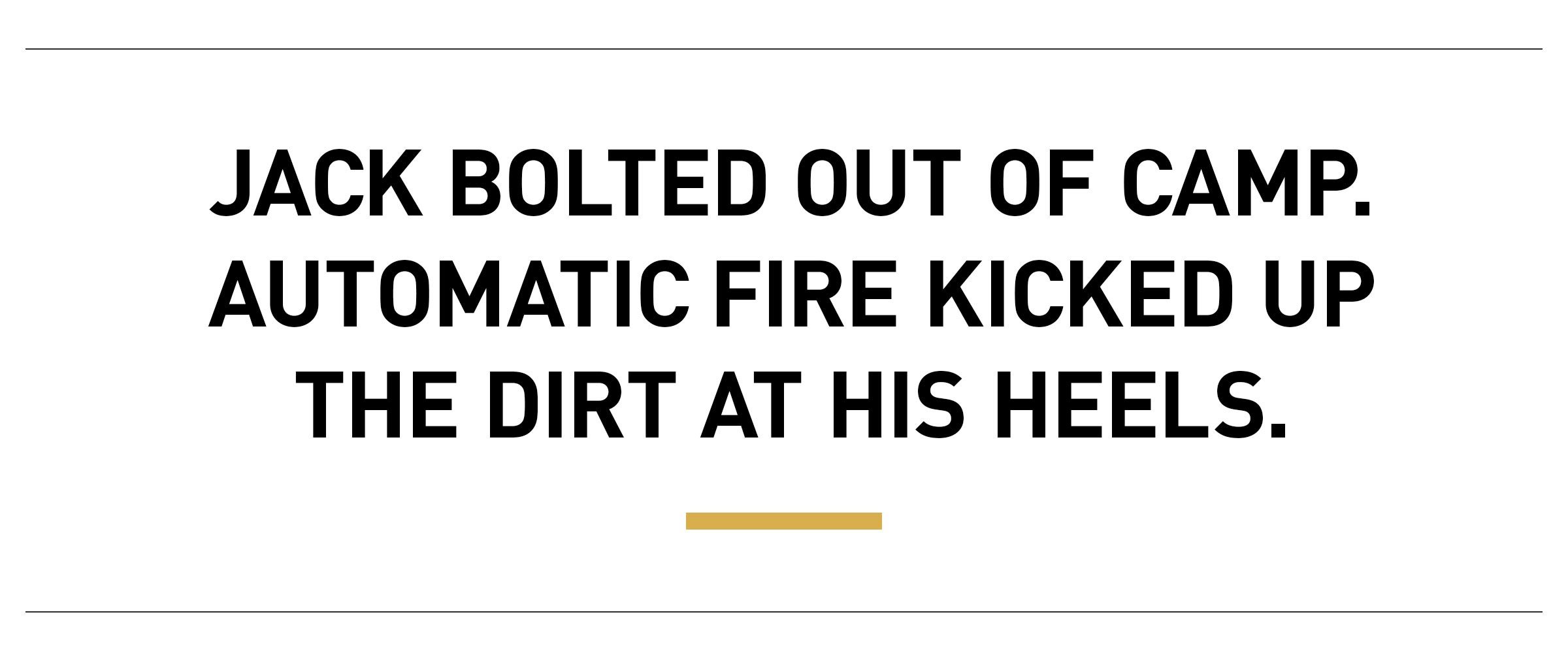
For the three-week journey, the handlers and canines lived in their own segregated village of dog huts and peeing posts placed on deck. Most days, they endured catcalls from veteran Marine Raiders. “Everyone looked on us as a curiosity and wondered what we were supposed to do,” said Clyde Henderson, who was in charge of the platoon. “We weren’t too sure ourselves.” Some of the handlers were worried. Would the animals panic and forget their training under heavy fire, as some critics thought? Would they be so shell-shocked they couldn’t work?
On the morning of November 1, 1943, around 14,000 Allied troops attacked Bougainville, which was defended by 45,000 seasoned Japanese forces. Dogs and men huddled aboard three Higgins landing craft. Mortar shells rained down on them, almost capsizing one of the boats. They rushed onto the beach, dodging enemy fire on the way to the tree line.
Hours after landing, Andy the scout dog and Caesar the messenger dog were called up for their first assignments. The Marines needed to control the area surrounding the two main trails running through Bougainville: the Piva and Numa-Numa. Japanese soldiers riddled the dense forest surrounding them. Pillboxes with crisscrossing machine guns dotted the trails, and snipers in trees waited patiently for Marine patrols to make it into their gunsights. The Japanese were experts at camouflage, and the inexperienced Americans’ vision would be obscured by dense vegetation and smoke from artillery and guns. The dogs would be their eyes and ears.
Andy led a patrol of 250 Marines into the steamy jungle. Robert Lansley looked at the men behind him. Really, they were kids, most about 20 years old. Some sported mustaches to hide their youth, but the bewilderment in their eyes gave it away. The faint tick-tick-tick of the Japanese machine guns continued somewhere in the distance.
The Doberman seemed happy to follow the thin dirt track into the unknown, but about 400 yards up the trail, Andy halted. He turned his head slowly to the left, then to the right, signaling some disturbance. Lansley made a gesture for M Company to halt. The Marines squatted down, fingers on the triggers of their rifles, their hearts in their throats. They waited. Silence. Finally Andy relaxed. It was probably just a wild boar, Lansley told the commander. The commander’s confidence in the dog, already suspect, seemed shaken. M Company pushed on.
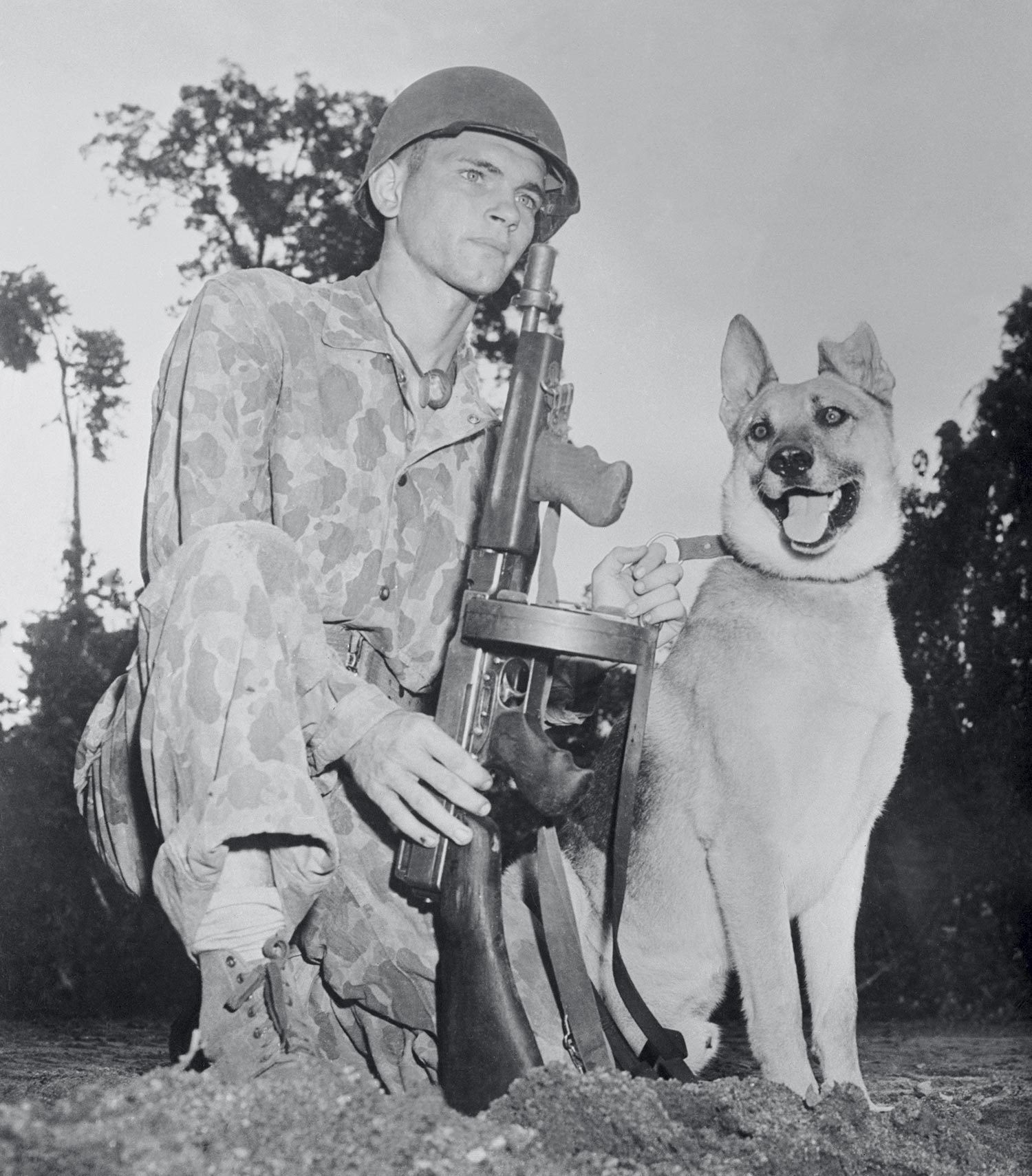
Another 150 yards up the trail, Andy stopped again. He perked up his good ear and let out a low growl, pointing his muzzle slightly to the right. Lansley squatted down and patted the dog. He could feel the tension in Andy’s muscles. “Well, this is it,” Lansley told his fellow Marines. “There’s a sniper back there, about 75 yards.”
The patrol leader sent Lansley and another soldier forward, while Andy stayed back. In the distance, they saw what Andy had sensed: two camouflaged machine gun nests manned by the enemy. They unleashed a spray of gunfire, which was returned. M Company men hit the ground as shrapnel flew overhead. The air filled with smoke and dust and the rumble of machine guns—the Americans’ clack-clack-clack and the Japanese’s tick-tick-tick. When he lost what little visibility he had, Lansley tossed two grenades toward the Japanese. Their explosions rocked the earth. Silence fell. Dazed, the Marines continued forward, past the gutted machine gun nests.
While Andy scouted out snipers, Caesar became the fastest means of communication between the Marines. Rufus Mayo would attach messages about the company’s progress to Caesar’s collar and send him back to Kleeman. Despite Mayo’s advancing, Caesar always found him again. When the Marines recovered written plans from a dead Japanese officer, it was Caesar who raced with them to camp. He made nine runs the second day, with sniper fire trailing him each time.
When night fell, the Marines hunkered down in place. At dawn, Mayo was bolted awake by Caesar’s growling. Japanese soldiers had infiltrated the camp—and two of them were now heading toward Mayo. Caesar leaped out of the foxhole to intercept them. Mayo called for his companion and then watched the dog falter, skitter sideways, and fall.
In the confusion, with Japanese attacking and Americans fighting them off, Mayo lost track of Caesar. After the gunfire ceased, he found a trail of blood leading into the jungle. Where the red line ended, he found Caesar bleeding out in the bushes and barely conscious. Mayo dropped to the ground and hugged the dog gently, just like the Glazer boys must have when he was a pup.
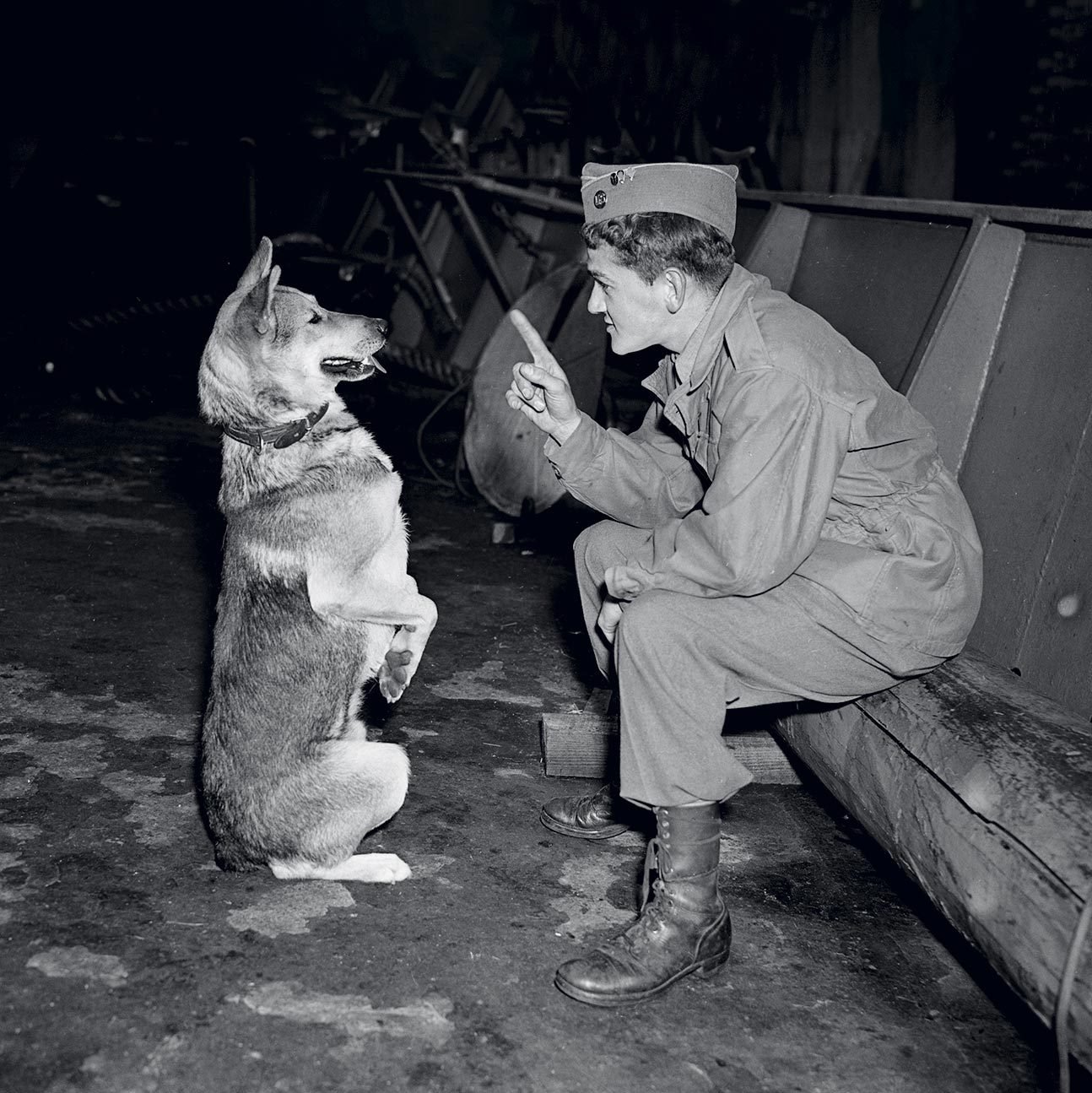
Three Marines jury-rigged a stretcher and carried Caesar to the regimental first aid station, where a surgeon removed a slug from his hip. The other bullet, in his shoulder, was too close to his heart to chance taking out. The lead would stay, but the doctor believed the gutsy dog would pull through. Caesar remained in sick bay recovering, with once skeptical raiders sneaking him their C‑rations while the nurses weren’t looking.
Jack, the Belgian sheepdog, replaced Caesar. A few days later, Jack and his handler Gordon Wortman were working a roadblock with E Company when the Japanese attacked. Wortman took a round to the leg, and a bullet cut through the loose skin on Jack’s back. The Marine lay there in agony. Jack, gushing blood, leaned against his handler, whimpering in pain. As the Japanese tightened the noose, the commanding officer said to Wortman, “Your dog is the only one we can send for help. Can he make it?”
Wortman looked at his wounded dog, pain clouding Jack’s normally intelligent eyes. “I think so.” Wortman tucked a request for aid in Jack’s collar pouch. He stroked the dog and whispered, “We’re depending on you, old boy. Report to Paul!” Jack warily rose to his feet and looked at Wortman. Then he turned his head toward the path and bolted out of camp. Automatic fire kicked up the dirt at Jack’s heels as the dog zagged into the underbrush.
It was a long dash through the jungle before the bedraggled dog, caked in blood and mud, appeared near headquarters at the feet of Paul Castracane. The Marine fished the message out of Jack’s collar pouch, ran it to battalion command, and then returned to carry Jack to the first aid tent. Soon, reinforcements fought their way up the trail and stopped the Japanese assault. Wortman and other casualties were carried out on stretchers.
In all, 423 Marines died capturing Bougainville, yet no patrol with a dog on point had lost a man. The survivors of Bougainville, including Caesar and Jack, continued island-hopping, serving in Saipan, Iwo Jima, and Okinawa.
When the war finally ended in September 1945, the Marine Corps had to decide what to do with the 559 dogs remaining in its service. An order went out to euthanize the animals. The men who fought alongside them wouldn’t hear of it. After being inundated with protests, the Marines agreed to de-train the dogs and return them to their owners.
The war dogs were going home.
***
This article also appeared in the November 2020 print edition of Reader’s Digest. The print version of the article misspelled the author’s name. It has been corrected here.
